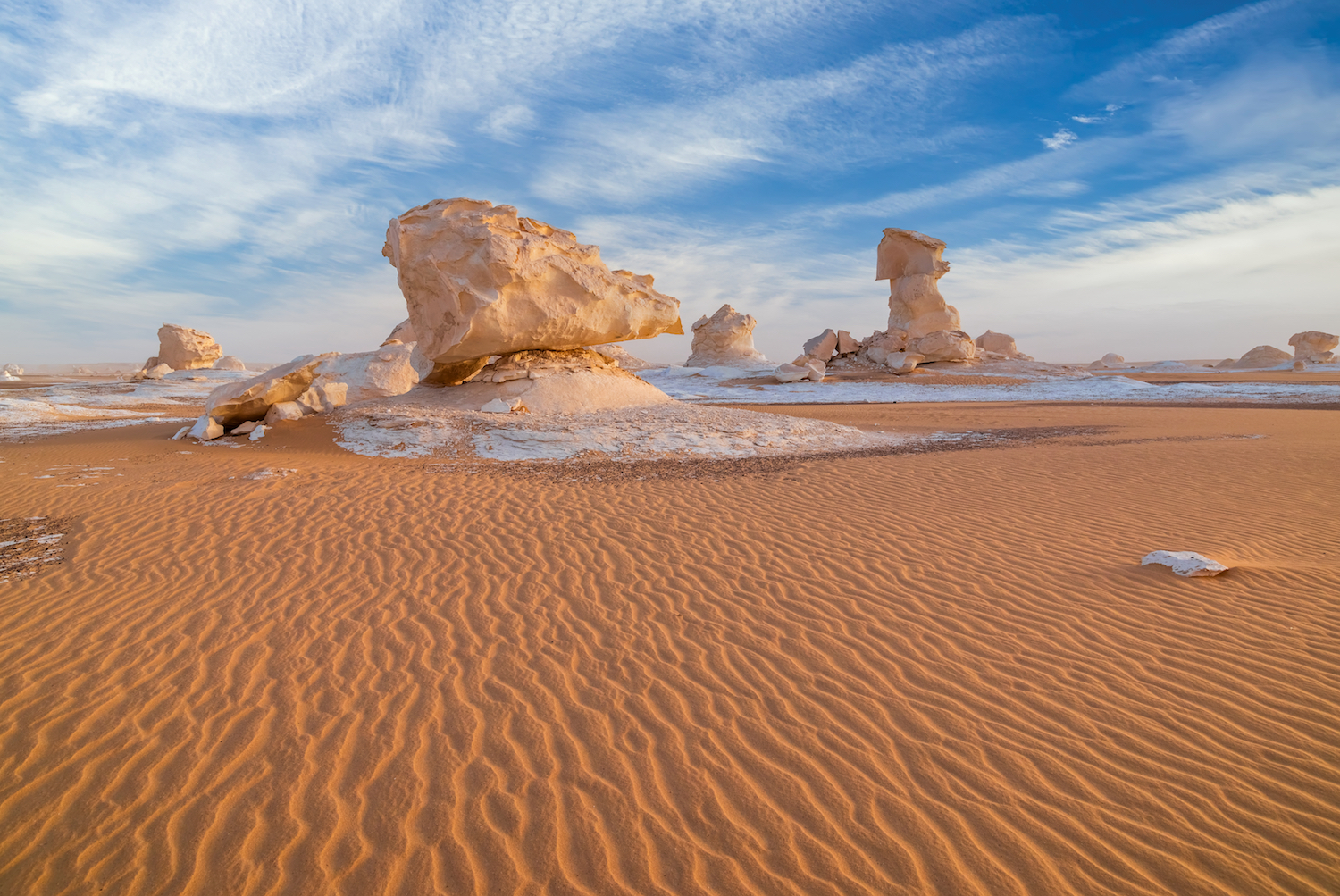Located in the heart of Oman, Al Wahiba Sands is a vast desert renowned for its striking landscape and diverse ecosystems. This 12,000-square-kilometer stretch is a natural marvel, offering visitors a glimpse into the unique beauty and biodiversity of Oman’s deserts. From towering sand dunes and dramatic color shifts to resilient flora and fauna, Al Wahiba Sands is an environment shaped by nature’s powerful forces and stands as an emblem of Oman’s natural heritage.
The Formation and Landscape of Al Wahiba Sands
The geography of Al Wahiba Sands is defined by its massive dunes, some reaching over 100 meters in height, shaped by centuries of wind erosion and movement. The sands themselves change in color, shifting between shades of gold, amber, and deep red depending on the time of day and the season. This dynamic landscape is not only a scenic wonder but also a result of geological processes dating back thousands of years, providing a unique study for those interested in the natural forces that shape desert environments. Travelers and researchers alike can witness this natural beauty, gaining insight into the geological history of Oman’s desert regions.
A Unique Ecosystem in the Desert
Despite the arid conditions, Al Wahiba Sands hosts a surprisingly rich ecosystem adapted to survive in extreme environments. The desert is home to a variety of plant species, including hardy shrubs and resilient trees that have adapted to the limited water supply and nutrient-poor soil. These plants sustain a small but important group of animals, including native mammals such as the Arabian oryx and the desert fox. Reptiles and various insects, alongside migratory and resident birds, also find their niche in this environment, contributing to the desert’s ecological diversity. Observing these species in their natural habitat offers valuable insights into desert adaptation and survival strategies.
The Cultural Heritage of the Bedouin People
Beyond its natural wonders, Al Wahiba Sands is also a region rich in cultural heritage. The Bedouin communities have called this desert home for centuries, developing ways of life that harmonize with the desert’s rhythms and challenges. Living in traditional tents, Bedouins practice customs passed down through generations, including livestock rearing, traditional crafts, and storytelling that captures the history and lore of the sands. Visitors to the area can gain a deeper understanding of Bedouin heritage by exploring their way of life, which reflects a deep respect for the land and its resources. Learning about Bedouin culture provides context to the desert’s significance beyond its natural beauty.
Sunrise and Sunset Over the Dunes: Nature’s Daily Spectacle
One of the most iconic sights in Al Wahiba Sands is the daily transition of light during sunrise and sunset. The interplay of light and shadow across the dunes creates an ever-changing tapestry, with colors that shift from cool morning tones to warm evening shades. These moments offer a unique chance to witness the desert’s tranquil yet powerful beauty, highlighting the intricate patterns of the dunes and the vastness of the landscape. Observing these times of day in Al Wahiba Sands offers a profound experience, showcasing the aesthetic and environmental significance of the region.
Al Wahiba Sands stands as a testament to the resilience of life and culture in one of the world’s most arid landscapes. From its unique geological formations and diverse ecosystems to the rich traditions of the Bedouin people, Al Wahiba Sands offers an array of insights into the natural and cultural history of Oman. Exploring this desert reveals much about adaptation, survival, and the beauty of untouched landscapes, making Al Wahiba Sands a remarkable natural wonder and a region of enduring significance in Oman.


